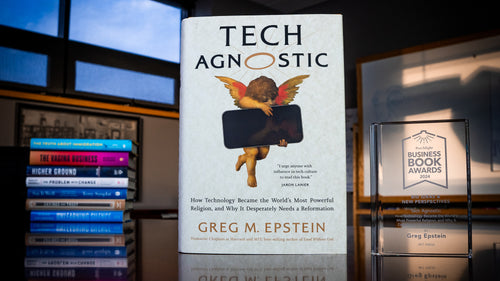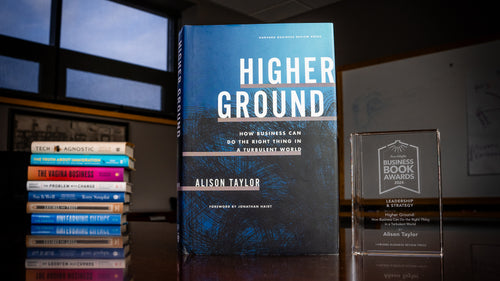Draw to Win: A Crash Course on How to Lead, Sell, and Innovate with Your Visual Mind
 Excerpted from Chapter 1
Excerpted from Chapter 1
of Draw to Win:
A Crash Course on How to Lead,
Sell, and Innovate
With Your Visual Mind
by Dan Roam
Portfolio
Drawing Is Our Oldest Technology
Thirty-two thousand years ago, your many-times-great-grandparents Oog and Aag drew pictures on the wall of a cave. They drew bison, a herd of horses, and many beautiful bulls. These drawings predate weapons, pots, jewelry, and most clothes.

Your ancient ancestors had things to tell each other, and the technology they used to record it was drawing. That desire to share was so compelling that Oog and Aag’s children and grandchildren and great-grandchildren kept going back to that same cave and drew the same pictures—for the next eight hundred years.
Adult drawing is “curious”? I don’t think so. The only thing curious is why people in business don’t draw more.
The Visual Is Back—and Here to Stay
Everyone online relies on pictures: Facebook, YouTube, Pinterest, Instagram, Snapchat, Tumblr; the greatest focus of social media is the image. This explosion of pictures isn’t a millennials-powered fad disconnected from the world of business. It’s the logical extension of those lines first drawn by Oog and Aag. Today we just have better technology.
Don’t think of sharing images as the dumbing-down of society or as threatening to business; on the contrary, creating and sharing pictures is the most natural thing in the world.
The problem is that there are too many images that aren’t very good, or good for you. Most pictures online are “lazy images.” Cute cats, train wrecks, and sexy bodies have their appeal, but they appeal to your lowest-common-denominator brain; they distract and occupy your brain without leaving much value behind.
Good images—meaningful pictures that trigger deep thoughts, clarify complexity, and inspire insight—exist too but are fewer in number. That’s not the fault of the pictures. The reason lazy images are so distracting is because the people who make them know that your brain loves to look at stuff. That’s good to know—and we’re going to take advantage of that too, but we’re going to use that insight to turn your good ideas into better pictures.
Why is that important? Because, as Cisco reminds us, 90 percent of the data you see is visual.
The Conversation Is Now Visual
Always enter the conversation already taking place in the customer’s mind. —ROBERT COLLIER
If you walk through the office talking loudly to yourself, nobody will listen. But if you can enter the conversation that is already going on in your colleague’s head, he or she will pay complete attention and invite you in. That’s always been true.
What’s different today is that now the conversation is visual. People’s stories are visual. Shopping is visual. The news is visual. If you want to enter just about any conversation today, you need to be visual too. Learn to join the visual conversation and you will be seen and heard.

Don’t Be Afraid of Drawing
Don’t be the businessperson who says, “I can’t draw; therefore, I’m not visual.” That’s a deceptive trap. It’s deceptive because it assumes that drawing is difficult and that being visual is dependent on drawing. Neither is true. And it’s a trap because it stops you from accessing the most powerful problem-solving part of your brain before you even know it exists. And that’s not just silly; it’s a huge roadblock.
What Is Drawing, Really?
I prefer drawing to talking. Drawing is faster, and leaves less room for lies. —LE CORBUSIER
Just as writing is the recording mechanism of verbal thinking, drawing is the recording mechanism of visual thinking. Drawing is neither a mystery nor a secret talent; it’s an attitude that says, “I am a visual creature and I am going to take advantage of that. I will draw to help me understand the world and I will keep drawing so that I can show the world what I see.” Thinking like someone who draws is easy. In fact, you already do it all the time.
- When you see an image or idea and you flip it around in your mind’s eye, you’re already drawing—just without the paper and pen.
- When you look at a problem with great attention and see the pieces that make it up, you’re drawing.
Reprinted from Draw to Win by Dan Roam with permission of Portfolio, an imprint of Penguin Publishing Group, a division of Penguin Random House LLC. Copyright © Dan Roam, 2016.
ABOUT THE AUTHOR
Dan Roam is an internationally bestselling author and the founder of The Napkin Academy, the world’s first online visual-thinking training program. Dan has helped leaders at Microsoft, Boeing, eBay, Kraft, Gap, IBM, the US Navy, the United States Senate, and the White House solve complex problems with simple pictures. Dan and his whiteboard have appeared on CNN, MSNBC, ABC, CBS, Fox, and NPR. You can find him online at danroam.com, or follow him on Twitter.



